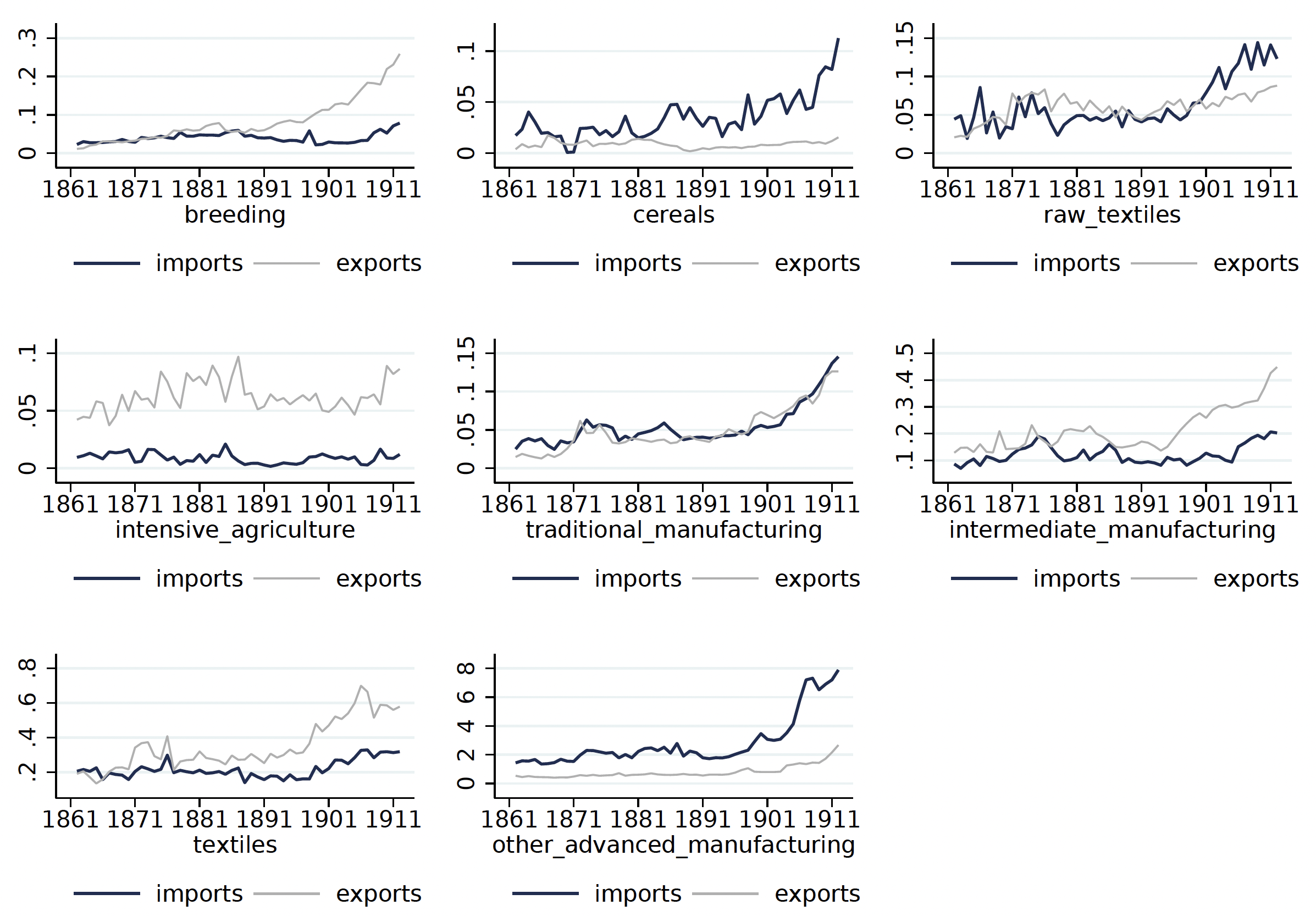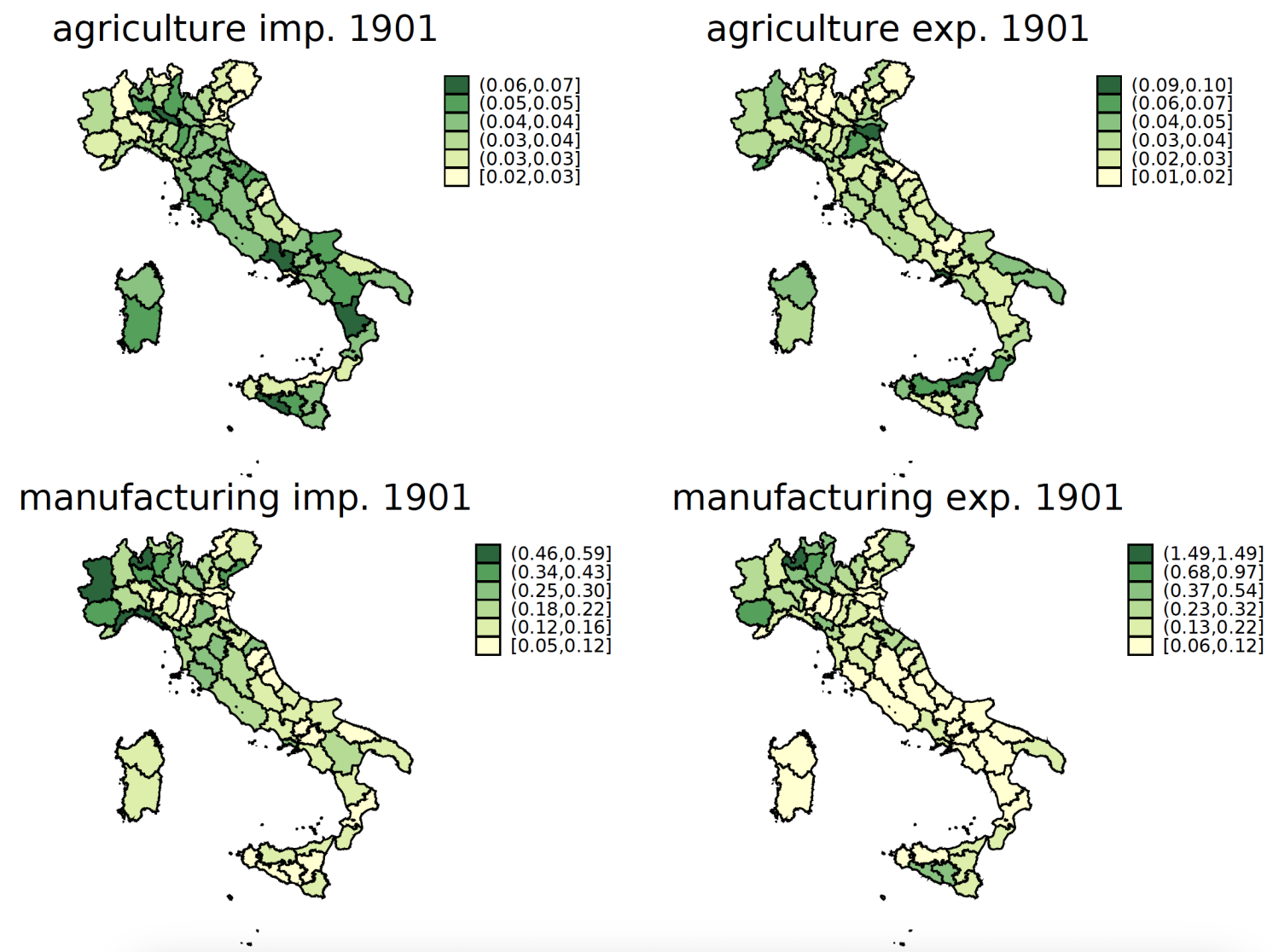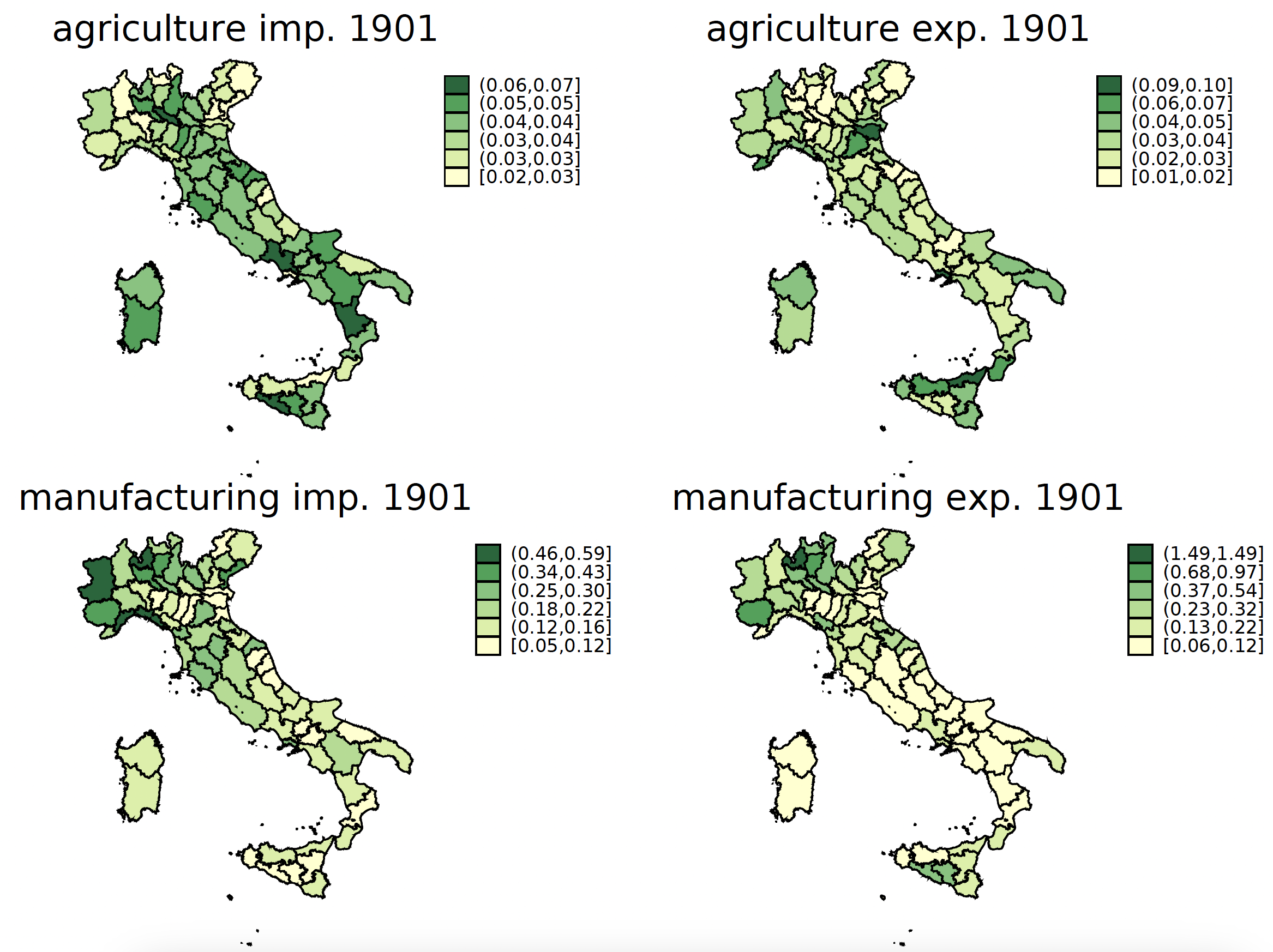The economic, social, and political consequences of globalisation have been a hot topic in the public debate over the last decades. The international integration of global markets can influence many aspects of national economies – access to new markets can boost national exports, while international competition may put downward pressure on wages and displace local production. The net economic effect is usually regarded as positive (Frankel and Romer 1999) whereas, according to the classic comparative advantages theory, the resulting process of specialisation increases efficiency. Nonetheless, globalisation has significant distributive consequences (Colantone et al. 2021, Milanovic 2016, Piketty 2013). These can prove challenging for its survival because of social and political turmoil (Colantone and Stanig 2018). Indeed, scholars have also debated whether we are experiencing the ‘end of globalisation’, as trade growth seems to have been slowing down in recent years (O’Rourke 2019, Baldwin 2022).
Another strain of literature has looked at the consequences of globalisation at the regional level. A lot of attention has been devoted to studying the effects of the ‘China syndrome’ (i.e. the sharp increase in Chinese imports) on local labour markets (Autor et al. 2013), finding that locations more exposed to external competition had heavier losses in terms of employment levels. Winners and losers can therefore be defined not only along the social dimension but also along the regional dimension, which can be even more meaningful for understanding the challenges posed by globalisation (Autor et al. 2020, Rodríguez-Pose 2018).
Regionalising trade exposure
What about the past periods of globalisation? What we refer to as the ‘First Globalisation’ unfolded in the second half of the 19th century and ended with the outbreak of WWI. The historical narrative on this period has so far largely focused on the convergence or divergence between ‘the West’ and ‘the Rest’, or the distributional effects among social groups (O’Rourke 1997, Williamson 1996). Much less attention has been devoted to possible regional effects within each country, despite the period of the First Globalisation seeing increasing regional inequality for several countries in the Atlantic economy (Rosés and Wolf 2018). Among these, Italy stands out in terms of rising levels of regional inequality (Felice 2019) while experiencing a significant increase in openness to trade, with imports and exports as a share of GDP increasing from 10% to 27% over the period.
In a recent paper (Gomellini et al. 2022), we investigate the relationship between globalisation and regional growth, following a similar methodology to Autor et al. (2013) to calculate the exposure to international trade of the 69 Italian provinces between 1881 and 1911 and then relate the changes in trade exposure to the growth of provincial GDP. Based on foreign trade data reconstructed by Federico et al. (2011), we calculate two indexes: one for import penetration, and the other for export orientation at the national level by sector. As shown in Figure 1, the general increase in trade openness is echoed in most sectors, showing moderate growth in the first ‘free trade’ post-unification years, followed by a trend of stagnation starting from the mid-1870s, roughly corresponding to a general protectionist period across Europe. The turn of the century shows a marked trade revival, which accounts for most of the overall trade increase in the period.
Figure 1 National trade exposure, by macro sector


Source: our calculations using imports and exports in thousands of lire per worker from Federico et al. (2011) and population census data.
Our goal is to ‘regionalise’ the two measures in Figure 1, assuming that each province will be more or less affected by the national exposure for each tradable based on its specialisation in that tradable. To do so, we produce estimates of specialisation based on full-time equivalent employment for the 69 Italian provinces using the top-35 tradable goods in agriculture and industry for the initial year of 1881. In particular, the reconstruction of the specialisation in different crops proves challenging because of the lack of detail in the population censuses, which requires us to estimate full-time equivalent employment mainly through land use and labour intensity of each crop. As expected, the south appears in our data as relatively specialised in agricultural sectors (wheat, olives, citrus, barley, jute, linen, hemp, cotton, and wool), while the productive structure of the north is more industrial, with a marked specialisation in metal-making, precision mechanics, machines, paper printing, chemical, rubber, rice, pasta, bread, and glass. To obtain provincial trade exposures, we multiply the national trade exposure in each tradable by the share of employment of each province. Figure 2 shows the levels of trade exposure in 1901. Although a more specific pattern could be identified by mapping each tradable, Figure 2 shows the geographic variation of trade exposure, especially in the manufacturing sector.
Figure 2 Trade exposure of the Italian provinces, 1901


Source: our calculations multiplying national trade exposure by provincial specialisation.
Sectoral and north–south divides
The relationship between provincial GDP growth and trade shocks is then analysed using a fixed effects panel. The first result is that an increase in the general trade exposure both in terms of imports and exports is positively associated with GDP growth. However, the aggregate estimates hide a large deal of heterogeneity, both between sectors and between the north and the south. When we estimate the model separately for agriculture and manufacturing, we see that the average positive effect is entirely driven by manufacturing; agricultural trade shocks display little association with GDP growth (if anything, negative for imports but weakly statistically significant). The spatial dimension is also crucial: the aggregate weak negative association of agricultural imports to growth conceals a much stronger negative effect of import penetration on GDP growth for the south. At the same time, the north experiences a significant positive association between export orientation in manufacturing, while the south does not.
What our results show is that the so-called ‘grain invasion’ (O’Rourke 1997) resulted in lower GDP growth in southern provinces. This result can mainly be attributed to the negative effect stemming from a reduction in employment in the south – an effect magnified by southern mass emigration (Gomellini and O’Grada 2011, Gray et al. 2019). We do not find any positive association between increasing exports of agricultural products and growth, consistent with the idea that specialising in primary commodity exports is not a driver of long-term GDP growth. At the same time, the north was able to take advantage of the opening to global trade through its expanding export-oriented manufacturing sector, which resulted in higher value added per worker.
Although the precise identification of the direction of causality between trade exposure and GDP is difficult, we consider some potential mechanisms underlying the different coefficients between the north and south. We find that a higher degree of mechanisation in the manufacturing sector (proxied by horsepower per worker) is associated with a positive coefficient between GDP growth and increasing export exposure. Southern manufacturing was at the time still mostly artisanal, while in the north manufacturing had started to be organised on a significantly larger scale, which made the latter much more able to compete on the global markets. We do not find evidence that heterogeneity in the trade–manufacturing growth nexus was driven by initial advantages such as market access or (waterpower) energy endowments.
This blog post is based on data from the recently published VoxEU.



































































